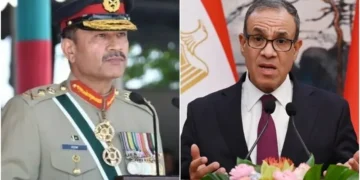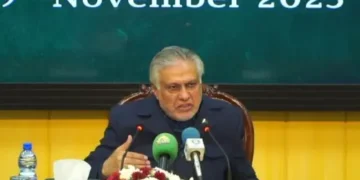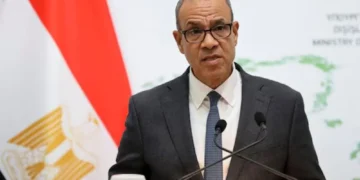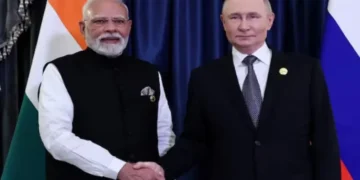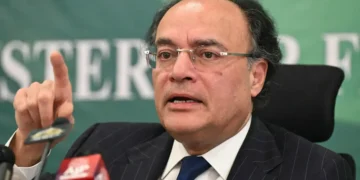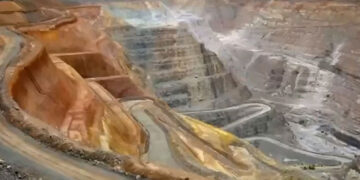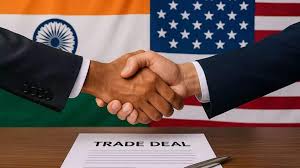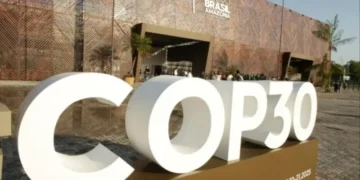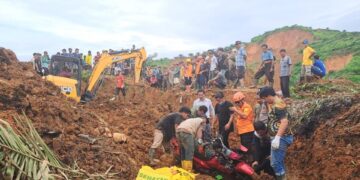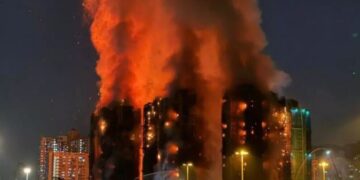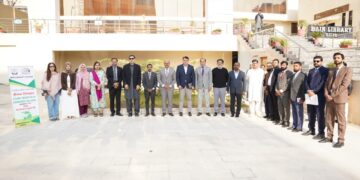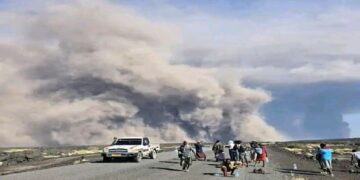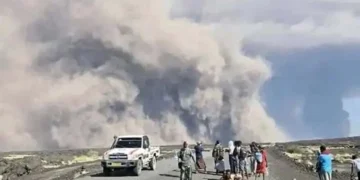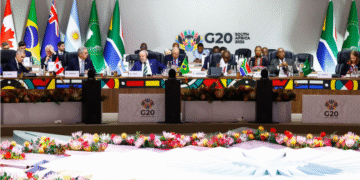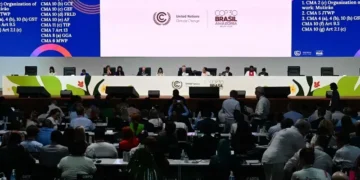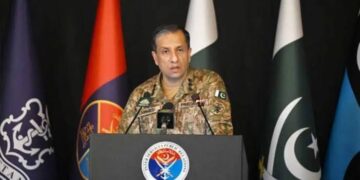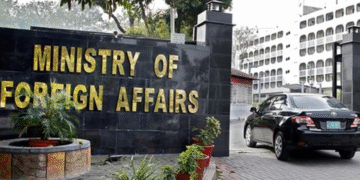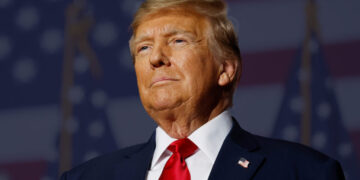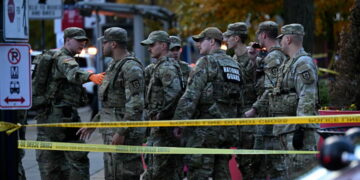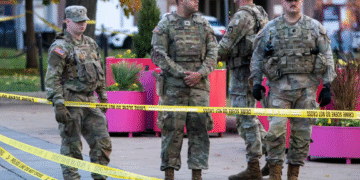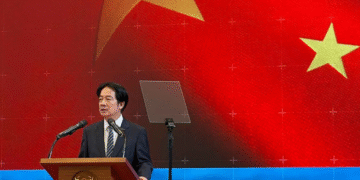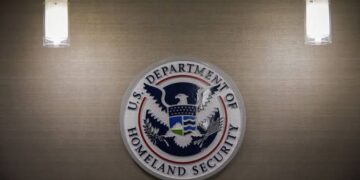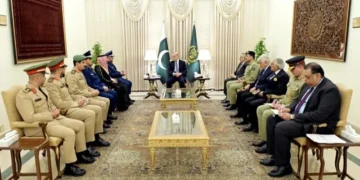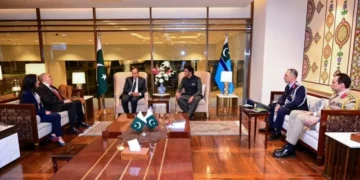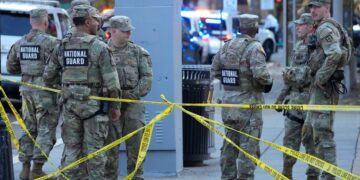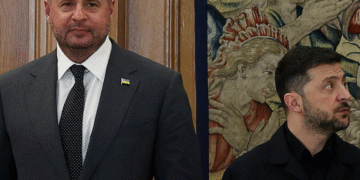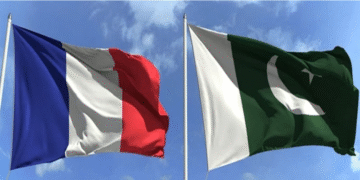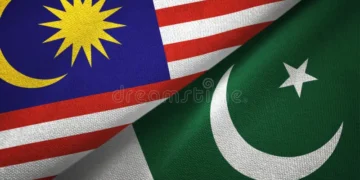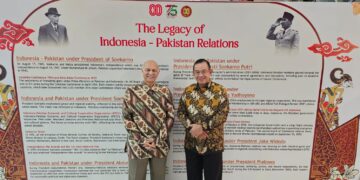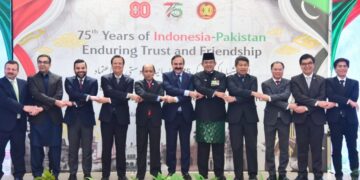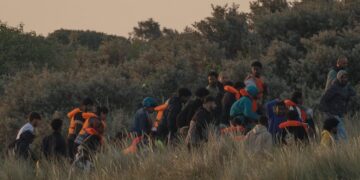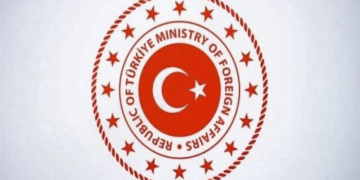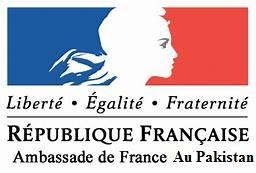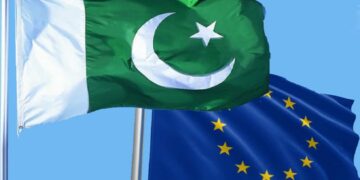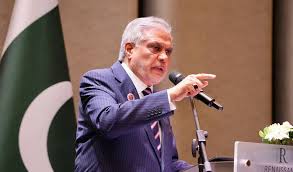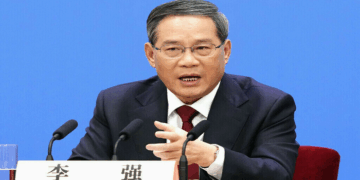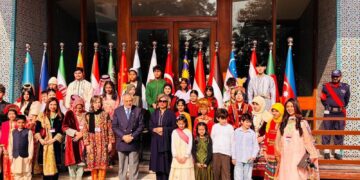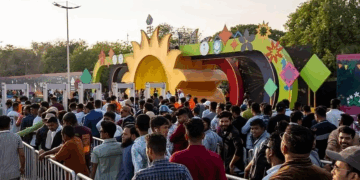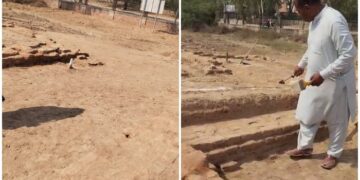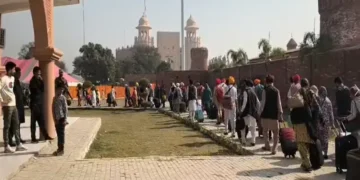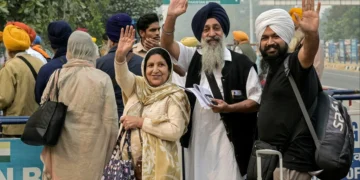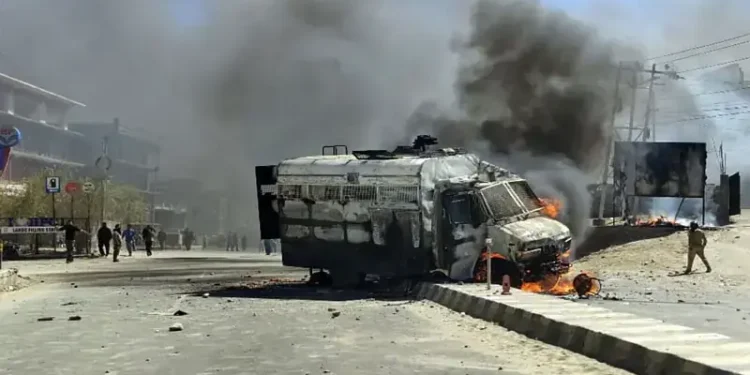Web Desk; Authorities in Indian-occupied Ladakh enforced a sweeping curfew on Thursday following violent protests that left at least four people dead and dozens more injured.
The unrest, driven largely by Generation Z demonstrators, has plunged the fragile Himalayan region into turmoil, with fresh fears of escalating instability.
The violence erupted on Wednesday when hundreds of young protesters poured onto the streets of Leh and Kargil, demanding constitutional safeguards, democratic rights, and greater employment opportunities.
Security forces attempted to disperse the rallies, sparking violent clashes that quickly spiraled out of control.
Angry demonstrators torched police and paramilitary vehicles, stormed government offices, and set several buildings ablaze, including the local headquarters of the ruling Bharatiya Janata Party (BJP).
By nightfall, authorities confirmed that at least four protesters had lost their lives, while dozens of civilians and security personnel were wounded. Nearly 40 demonstrators were arrested in overnight raids.
By Thursday morning, Ladakh’s two main districts were placed under heavy lockdown. Paramilitary troops and police units patrolled the streets, enforcing strict curfew orders.
In Kargil, local organizations called for a complete strike, with businesses voluntarily shutting down in solidarity with the protesters.
Lieutenant Governor Kavinder Gupta described the deaths as “tragic and shocking,” defending the curfew as essential to prevent further bloodshed.
Local political leader Sajjad Kargili, however, urged New Delhi to abandon its heavy-handed approach. “The government must show wisdom, not force. Dialogue with the people of Ladakh must resume immediately,” he stressed.
The unrest has reignited anger over the Indian government’s 2019 decision to revoke Article 370 of the constitution, which stripped Jammu and Kashmir, including Ladakh, of its semi-autonomous status and placed it under direct federal control.
While some initially welcomed the move, widespread discontent has since taken root amid concerns of land dispossession, marginalization of local businesses, and political disenfranchisement.
Residents argue that Ladakh is now ruled by unelected bureaucrats, leaving them powerless to elect their own representatives.
Despite several rounds of negotiations between local leaders and New Delhi, no meaningful progress has been achieved. Another round of talks has been scheduled for October 6, though skepticism remains high.
Ladakh’s unique demographics add further complexity to the crisis: while Leh is predominantly Buddhist, Kargil has a Muslim majority.
The region also faces grave environmental challenges, with thousands of glaciers melting rapidly, raising fears of acute water shortages in the near future.
Meanwhile, the already militarized region remains a sensitive flashpoint due to simmering border tensions with China since 2020.
Analysts warn that ignoring local demands could deepen Ladakh’s crisis, destabilizing not only the region but also South Asia’s delicate Himalayan frontier.
For now, residents remain under curfew as Ladakh grapples with the deadliest unrest since its constitutional status was revoked — a stark reminder of the widening gulf between New Delhi and the people of the restive territory.

